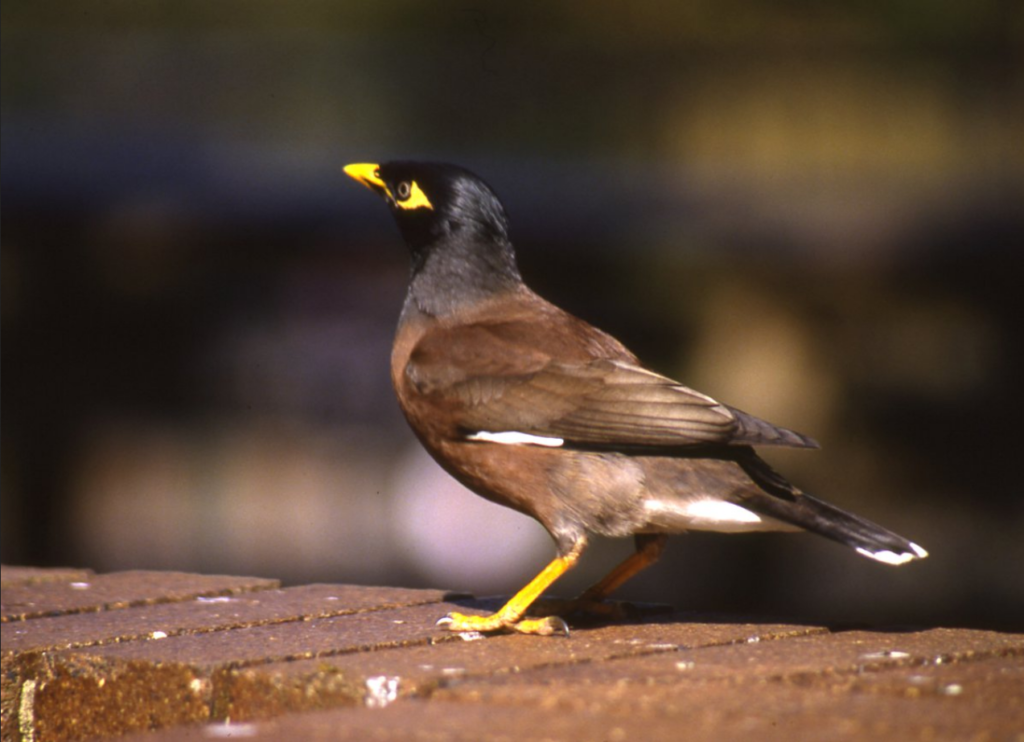The Common Myna is recognizable by its black head and breast, blending into a generally brownish plumage, with a distinct yellow orbital skin patch and bill. With an overall length of 25 cm, it is easily spotted in both densely populated urban areas and remote rural regions. Both male and female Common Mynas share a similar appearance.
This species is known for forming lifelong pairs and breeds throughout much of the year, selecting nesting sites in tree holes or walls. A typical clutch consists of 4-6 eggs, with an incubation period of 17 to 18 days and a fledging period of 22 to 24 days. While these mynas typically use twigs, roots, tow, and debris for nest construction, there have been instances of them utilizing unconventional materials such as tissue paper, tin foil, and shed snake skin.

Common Mynas exhibit opportunistic nesting behavior, making use of the nests of woodpeckers and parakeets or readily adapting to nest boxes. Their aggressive tendencies, including evicting chicks from occupied nests, contribute to their success as an invasive species.
In recent times, there has been a concerning rise in reported deformities among Common Mynas in Chandigarh. Birders and ornithologists note that while deformities are common among bird species, the incidence appears higher in Common Mynas. A prevalent deformity involves a bald head and neck, with the loss of feathers and fur. Experts attribute these deformities to genetic factors and hormonal imbalances.

As omnivores, Common Mynas have a varied diet that includes insects, arachnids, crustaceans, reptiles, seeds, grains, and discarded human waste. I had the opportunity to observe a pair of Common Mynas, one with a completely bald head and neck, at Panjab University (PU). The pair collaborated in picking and feeding on insects in a flower bed enriched with cow/buffalo dung compost, displaying no unusual behavior between the healthy and deformed bird.
In a September 2019 online interview with The Indian Express, Dr. Vibhu Prakash Mathur, a principal scientist with the Bombay Natural History Society (BNHS), discussed various reasons for bird deformities, such as mal-positioning of the embryo during incubation, skull injuries, or poor nutrition. He mentioned studies in the US that identified a novel virus related to avian picornaviruses as a cause for deformities in areas with a high number of affected birds, ruling out other infections or malnutrition as significant factors.
